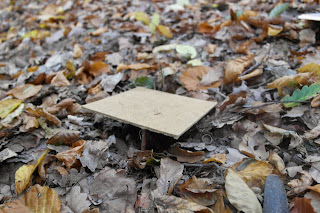Forest ecology is the scientific study of the interrelated patterns, processes, flora, fauna and ecosystems in forests.
In Taiwan we only learn for the theory about forest ecology, but not doing any experiment in our courses.
Why?
Because there are enormous species in Taiwan. It take too long for us to do this kind of experiment. You can see how high the biodiversity it is in Taiwan.
Let's go with Marek, and see what are we going to do for the experiment.
 |
| This is the forest we are going to do our experiment...Rogow Forest!! |
 |
| This is the way to our plot |
 |
| Then go into the forest |
 |
| Familiar? Wow!! DBH meter and tape. |
We select 10 sample points per study area.(It could be random or fixed)
Stretch two strings at right angles, both passing through each point.
In each quarter select a tree that is closest to the point.
(don't choose any tree that DBH is lower than 7 cm, or shrubs.)
The second is similar. This time we do with the Understory.
But this time we measure not only DBH, but crown diameters.
 |
| method of point-quarters |
There are two methods for us to use:
One is transects method
Select 4 transects, each of 5 m long. Stretching a tape between two stakes. Move along the tape and record distance of plants intercepted by the tape. Consider only those plants touched by the tape, lying under or over it. Make a records for each of 5 distinguished plant groups, separately. (Dwarf-shrubs, Grass & sedges, Mosses & lichens, Other herbaceous, Tree seedlings, Bare ground)
The other is circular plots
Forth we are going to do is experiment of Epigeic fauna.
Sampling with Barber's traps
 |
| Dig a hole as big as the trap |
 |
| Put the trap in the hole |
 |
| put some leaves inside for beetles to hide.(this prevent them fight with each other) |
 |
| Then put a wooden board on it to prevent rain |
Or we can also use the other method:
 |
| Pick a 1times 1 m square in our plot, and see what can we find in it! |
 |
| Maggot |
 |
| millepede |
Lets see some photos of this forest.
 |
| hole made by a woodpecker |
It's an inventory of components that potentially increase biodiversity of an ecosystem.
At last we summarize the score of the questions and see how many scores we got.
This article is hard, cause it's some method we use in forest.
But hope you like this:)
因文章內容為小編非常用心的以CSS HTML編碼撰寫,學校未提供最高權限
請至原始網誌查看高畫質影片及照片:)
文章原始網址請查看:





沒有留言:
張貼留言